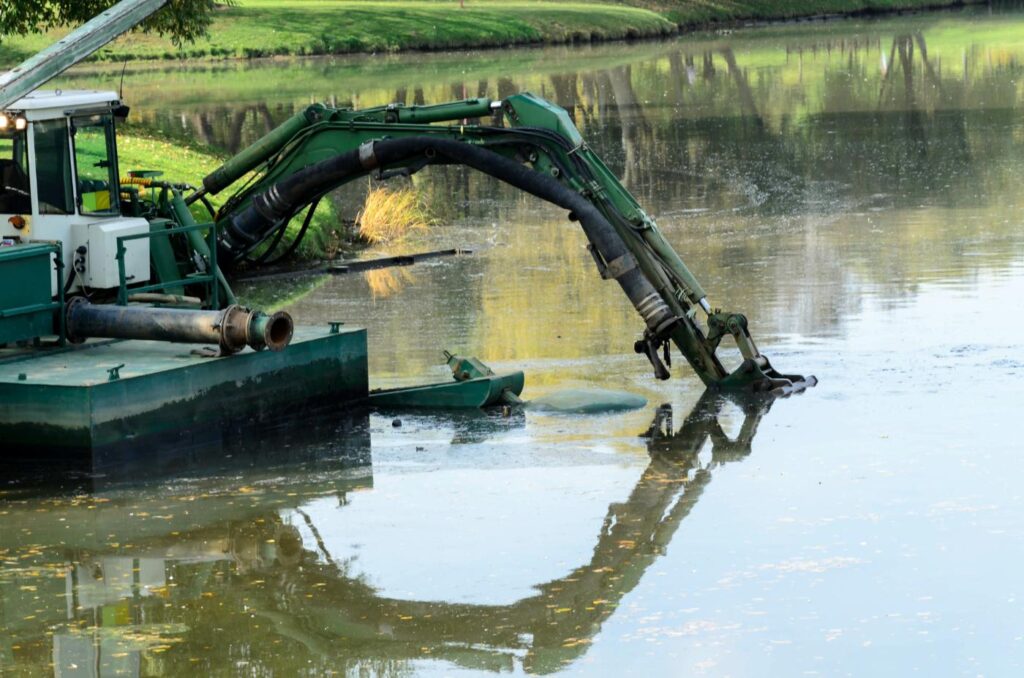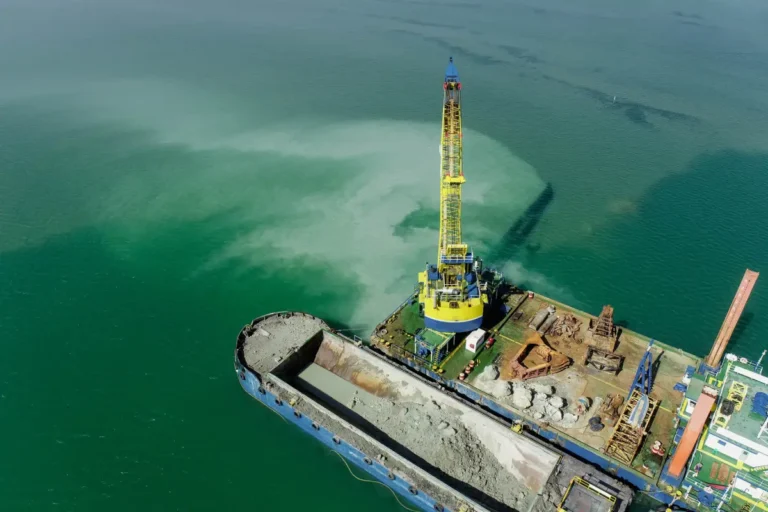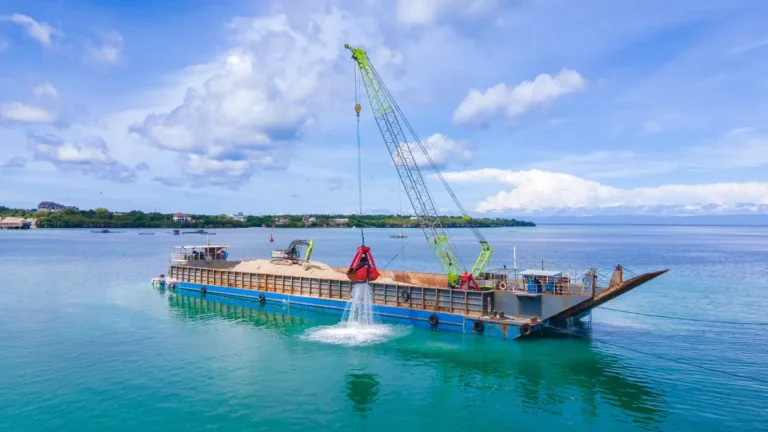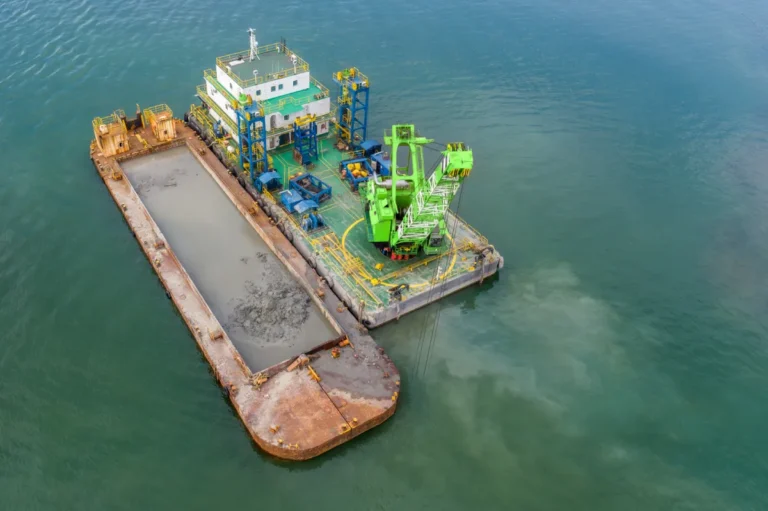Dredging machines are indispensable tools in today’s infrastructure, environmental, and industrial landscapes. Whether clearing navigational channels, reclaiming land, extracting resources, or maintaining wastewater lagoons, these machines serve a wide range of critical functions. With a variety of types—from large trailing suction dredgers to compact, remote-controlled options like the dredge sled—modern dredging equipment offers tailored solutions for diverse applications. In this deep dive, we explore how dredging machines work, their key components, common use cases, and the technological innovations shaping the future of efficient and eco-friendly sediment removal.
What Are Dredging Machines?
Dredging machines are specialized equipment used to excavate and remove sediment, debris, or other materials from underwater surfaces such as rivers, lakes, harbors, and lagoons. These machines play a vital role in maintaining waterway depth, enabling port access, supporting construction projects, and extracting valuable resources like sand, gravel, and minerals. Whether used for environmental remediation or industrial expansion, dredging machines ensure smooth operations in both inland and coastal zones.
The core mechanical functions of dredging machines involve excavation, suction, and discharge. First, the machine loosens or cuts through submerged material using mechanical tools such as cutterheads or augers. Then, through a powerful pumping system, the loosened material is suctioned and transported through discharge pipelines to a designated disposal or processing location. This three-step process allows for continuous sediment removal, making the operation efficient and scalable.
Depending on project requirements, dredging machines are powered by hydraulic systems, electric motors, or diesel engines. Hydraulic power is often favored for its strength and precision, especially in mobile dredging applications. Electric-powered systems offer clean and quiet operations, ideal for urban or sensitive environments. Diesel-powered dredgers, on the other hand, provide robust, high-output performance for remote or large-scale dredging sites where electric access may be limited.
There are several types of dredging machines, each tailored for specific tasks and environmental conditions. These include trailing suction hopper dredgers, cutter suction dredgers, auger dredgers, and more compact, shallow-water solutions like the dredge sled. For instance, sand dredging equipment such as cutter suction dredgers and dredge sleds is frequently deployed in sand mining and beach replenishment operations due to their ability to handle abrasive materials and maintain consistent throughput.
By combining powerful mechanics with adaptable power sources and specialized configurations, dredging machines continue to be indispensable assets in a wide range of sediment management and underwater excavation projects.
Types of Dredging Machines and Their Mechanisms

Dredging machines come in various configurations, each engineered for specific tasks, materials, and site conditions. Understanding how each type operates helps in selecting the right solution for projects involving sediment removal, environmental cleanup, and resource extraction. Below are some of the most widely used types of dredging machines and the mechanisms that make them effective.
Cutter Suction Dredgers (CSD)
Cutter suction dredgers are powerful dredging machines designed for removing compacted or hard materials like clay, rock, or packed sand. A rotating cutter head at the suction inlet breaks up the seabed or riverbed material, which is then suctioned through a pipeline by a high-powered pump.
Ideal applications and materials: CSDs are commonly used in port deepening, land reclamation, and sand dredging equipment operations. They handle abrasive materials efficiently and are ideal for continuous high-volume dredging.
Limitations: CSDs require stable positioning, usually through spud poles or anchors, which limits their mobility during operation. They are less effective in deep-sea environments where movement and transport are necessary.
Trailing Suction Hopper Dredgers (TSHD)
Trailing suction hopper dredgers operate while in motion, trailing long suction pipes that collect sediment from the seafloor. The loosened material is pumped into an onboard hopper for temporary storage.
Mechanism of suction while moving: TSHDs combine dredging and transportation in one machine. As they move along the dredging site, suction pipes draw in the material, allowing for uninterrupted excavation.
Hopper storage and discharge: Collected material is stored in the ship’s hopper and later discharged via bottom doors, pipelines, or rainbowing techniques, depending on the project.
Common usage: These dredging machines are ideal for maintenance dredging in ports and shipping channels and are often used for beach nourishment and land reclamation where large volumes of sand are moved.
Auger Dredgers
Auger dredgers use a horizontal rotating auger to loosen and capture sediment in a highly controlled manner. The auger head is connected to a suction pipe that pumps the material away.
Precision-based dredging method: This design allows for precision dredging, making it ideal for environmentally sensitive areas where turbidity must be minimized.
Suited for environmental applications and narrow areas: Auger dredgers are often used in lagoons, reservoirs, and contaminated sediment cleanup where tight access and low-impact dredging are essential.
Jet-Lift and Air-Lift Dredgers
These dredgers utilize the principles of fluid dynamics—jet propulsion or air injection—to move sediment upward through a pipe.
How fluid dynamics are used to lift materials: Jet-lift dredgers use high-pressure water jets, while air-lift dredgers inject compressed air to create lift via buoyancy. Both methods are non-mechanical and rely on fluid energy.
Best use scenarios: They are best suited for scientific applications, archaeological sites, or low-impact sediment recovery in shallow areas where mechanical agitation may be undesirable.
Dredge Sled: The Compact Workhorse
The dredge sled is a compact, surface-skimming dredging machine designed for shallow water and soft sediment applications. Unlike large dredgers, it operates without spuds or swing wires, offering unmatched simplicity and efficiency.
What makes a dredge sled unique is its low-profile design, and the direct suction mechanism allows it to slide across the bottom surface while removing material without the need for repositioning.
How it simplifies shallow water or lagoon dredging: The dredge sled eliminates the need for large crews or complex infrastructure. It’s a plug-and-play solution for small-scale dredging operations where traditional sand dredging equipment may be overkill.
Portable and remote-operated advantages: Many dredge sled systems come with wireless remote-control capability, reducing manual labor and increasing safety during operation.
Best used in pond, canal, and wastewater applications: Ideal for maintaining lagoons, settling ponds, and stormwater basins, the dredge sled provides an affordable, low-maintenance alternative to bulkier dredging machines.
Components and Working Principles of Dredging Machines

Modern dredging machines are complex systems built to excavate and transport underwater sediments efficiently and reliably. While designs vary depending on the type of dredger and its intended use, most machines share several core components and operate under a similar workflow, from deployment to sediment removal and discharge. Understanding these components and processes is essential for maximizing the performance of dredging projects, especially when working with specialized systems like sand dredging equipment or compact solutions such as the dredge sled.
Major Components of Dredging Machines
1. Suction Head
The suction head is the intake point where water and sediment enter the dredging system. Positioned close to or on the seabed, the suction head draws in the dredged material using the force of a powerful pump. In applications involving fine sediments or sand, specialized suction heads are often used to minimize turbidity and improve flow consistency.
2. Cutterhead (If Applicable)
In cutter suction dredgers and similar sand dredging equipment, the cutterhead is a rotating mechanical tool mounted at the suction head. It breaks up hard-packed material like clay, gravel, or compacted sand before it is suctioned. This makes cutterheads essential for high-resistance environments and the excavation of dense sediments.
3. Discharge Line
Once material is suctioned, it travels through a discharge line—typically a pipeline that transports the slurry to a designated disposal or processing area. Discharge lines can span hundreds of meters depending on site requirements and are often made from high-durability materials to withstand abrasion from sand and debris.
4. Pump System
The pump is the heart of all dredging machines, responsible for moving sediment-laden water through the system. Most pumps are centrifugal slurry pumps, capable of handling high-solid concentrations. Efficient pump performance is critical, particularly in sand dredging equipment, where abrasive wear is a major concern.
5. Control System (Manual, Remote, or Automated)
Control systems vary from manual levers and switches to fully automated, GPS-guided interfaces. The dredge sled, for example, is often operated via wireless remote control, making it an accessible option for small-scale, shallow-water dredging. Advanced systems include monitoring dashboards that track parameters like depth, flow rate, and pump pressure in real-time.
Workflow from Deployment to Sediment Removal to Discharge
The operational process of dredging machines generally follows a sequential workflow:
- Deployment – The dredger is transported to the site and positioned using anchors, spud poles, or thrusters (or simply lowered, in the case of a dredge sled).
- Excavation – The suction head or cutterhead is lowered to the target sediment layer. Mechanical or hydraulic tools loosen the material.
- Suction and Transport – Loosened material is pumped through suction lines into the discharge system.
- Discharge – The slurry is transported to designated spoil areas, containment basins, or processing facilities via pipelines or onboard hoppers.
Innovations in Dredge Automation and Monitoring
Recent innovations have transformed how dredging machines are monitored and controlled. Automation systems now allow operators to maintain consistent excavation depth, reduce fuel consumption, and improve overall dredging precision. GPS positioning, sonar mapping, and real-time telemetry are being integrated into both large-scale vessels and compact solutions like the dredge sled.
In addition, predictive maintenance tools and remote diagnostics are helping reduce downtime and extend equipment life, especially valuable in abrasive applications handled by sand dredging equipment. These technologies are not only boosting productivity but also enabling more environmentally responsible dredging practices.
Common Applications of Dredging Machines

Dredging machines are essential tools across a wide range of industries, serving purposes that go beyond just excavation. From restoring navigable waterways to enabling new land development and environmental cleanup, these machines are engineered to tackle both large-scale infrastructure challenges and highly specialized projects. Below are the most common applications of dredging machines, including where sand dredging equipment and the dredge sled are especially effective.
Waterway Maintenance
One of the most critical roles of dredging machines is maintaining the navigability of ports, rivers, and canals. Over time, these waterways accumulate silt, sediment, and debris, which can obstruct ship traffic and reduce channel depth.
- Maintaining navigability: Dredging removes accumulated material to restore safe passage for commercial and recreational vessels.
- Silt and debris removal: Dredgers, including cutter suction and trailing suction types, are used to remove fine sediment and maintain optimal flow conditions.
Land Reclamation
Sand dredging equipment is heavily used in land reclamation projects, where large volumes of sediment are relocated to create new land areas or reinforce coastlines.
- Coastal construction: Dredged sand is deposited to raise elevation and build landmass for airports, ports, and commercial zones.
- Beach nourishment and island formation: Sand is pumped onto eroded shorelines to restore beaches and protect against coastal erosion. Some projects also involve forming artificial islands using transported fill.
Mining and Resource Extraction
Many mining operations rely on dredging machines to access and transport underwater resources such as sand, gravel, and minerals.
- Mineral extraction: Dredgers are used to extract valuable ores and aggregates from riverbeds, lakes, and offshore deposits.
- Sand and gravel recovery: Cutter suction dredgers and high-powered sand dredging equipment help recover bulk construction materials with high throughput.
Environmental Remediation
Dredging plays a key role in cleaning up contaminated waterways, industrial ponds, and toxic sediment zones.
- Removing hazardous materials: Specialized dredging machines are used to extract contaminated sludge from factory runoff zones, harbors, and chemical spill areas.
- Precision dredging: Auger dredgers and compact solutions like the dredge sled are ideal for targeted cleanup with minimal environmental disturbance, especially in shallow or sensitive areas.
Industrial and Municipal Applications
In municipal and industrial settings, dredging machines help maintain critical infrastructure related to water treatment and flood control.
- Lagoon and pond cleaning: Facilities use dredgers to remove sludge buildup in wastewater treatment ponds and retention lagoons.
- Stormwater basin maintenance: The dredge sled is particularly effective for maintaining small basins, as it offers portable, remote-controlled operation with minimal setup.
Choosing the Right Dredging Machine for Your Project

Selecting the right dredging machines for a specific project is crucial to achieving efficiency, cost-effectiveness, and environmental compliance. Different dredging scenarios demand tailored equipment based on site conditions, material characteristics, and project goals. Whether you’re working with fine silt in narrow canals or extracting bulk sand offshore, understanding key selection criteria ensures optimal results. The right choice can also reduce downtime, improve material recovery, and minimize ecological impact, especially when using specialized tools like sand dredging equipment or a dredge sled.
Type of Material (Silt, Sand, Sludge, Gravel)
The physical properties of the material to be dredged determine the machine configuration required.
- Silt and sludge are typically handled by low-turbulence dredgers like augers or dredge sleds, which reduce resuspension and turbidity.
- Sand and gravel, being more abrasive and dense, require rugged sand dredging equipment such as cutter suction dredgers with wear-resistant pumps.
- Rocky or compacted material demands mechanical cutters or rippers for effective removal.
Water Depth and Accessibility
Project site depth and layout influence the dredger size and deployment method.
- Shallow or narrow areas like ponds and lagoons are best served by small, maneuverable dredging machines such as the dredge sled, which can be easily deployed with minimal infrastructure.
- Deepwater or offshore environments typically require larger trailing suction or hopper dredgers with extended suction arms and onboard hoppers.
Required Throughput and Discharge Distance
Throughput refers to the volume of material removed per unit of time, while discharge distance affects pipeline design and pump power.
- High-throughput demands, such as in sand mining, benefit from robust sand dredging equipment with powerful centrifugal pumps.
- Projects involving long discharge distances may require booster pumps or floating pipeline support systems to maintain consistent material flow.
Environmental and Regulatory Constraints
Compliance with local environmental laws is critical, especially in sensitive or protected ecosystems.
- In such zones, using dredging machines with precision controls, like auger dredgers or the dredge sled, helps limit ecological disruption.
- Sediment containment measures, turbidity curtains, and low-noise equipment may also be required.
When to Use Compact Solutions Like a Dredge Sled
The dredge sled is an ideal solution for small-scale or shallow water dredging applications where access, setup time, and operational simplicity are top priorities.
- Best suited for wastewater lagoons, stormwater basins, and retention ponds, the dredge sled offers remote operation, low maintenance, and excellent cost-efficiency.
- It’s also advantageous in tight-access sites where conventional dredging machines are too large or cumbersome to deploy.
Maintenance and Operational Cost Considerations
Total project cost isn’t just about purchase price—it includes ongoing maintenance, crew requirements, fuel consumption, and part replacement.
- Sand dredging equipment may experience higher wear rates and require more frequent replacement of liners and impellers due to abrasion.
- Compact dredgers like the dredge sled have fewer moving parts and often lower operational costs, making them an economical choice for routine or short-term dredging.
Future of Dredging Machines
As demand for efficient and sustainable sediment removal increases across marine, mining, and municipal sectors, the future of dredging machines is being reshaped by innovation. From automation and artificial intelligence to environmentally responsible designs, the next generation of dredging technology is focused on performance, precision, and sustainability. These advances are particularly relevant in the evolution of sand dredging equipment and compact solutions like the dredge sled, which are setting new benchmarks for productivity and environmental compliance.
Trends in Automation, Remote Operations, and AI Integration
One of the most transformative developments in dredging machines is the integration of automation and remote operation systems. Advanced dredgers are now equipped with GPS-guided control systems, sonar-based depth tracking, and real-time telemetry to allow for precise excavation with minimal operator input.
- AI-powered dredging is emerging as a tool for optimizing pump speeds, cutter performance, and dredge positioning based on real-time sediment density data.
- Remote-controlled platforms—like the dredge sled—are already leading the way in minimizing manual labor, improving safety, and enabling 24/7 operation with minimal crew involvement.
Eco-Friendly Dredging Solutions
Environmental sustainability is a growing priority in the dredging industry, and modern dredging machines are being designed with eco-conscious features to minimize ecological disruption.
- Low-turbidity dredging heads and sealed systems are helping reduce sediment resuspension and water contamination.
- Electric and hybrid-powered dredgers are gaining traction as alternatives to diesel-based equipment, especially in urban or protected environments.
- Sand dredging equipment with precision suction controls and environmentally safe hydraulic fluids is helping limit the environmental footprint of high-volume sand recovery projects.
Modular and Portable Designs Like Remote-Operated Sleds
The rise of modular dredging machines is revolutionizing site flexibility and project scalability. Systems like the dredge sled exemplify this shift toward compact, portable, and easily deployable equipment.
- These plug-and-play systems can be transported in a truck, launched by a two-person crew, and operated via wireless remote control, making them ideal for small ponds, lagoons, or canals.
- Modular dredgers allow operators to scale operations quickly by adding pump modules, booster systems, or control upgrades without replacing the entire unit.
Sustainability and Emissions Reduction in Dredging Operations
Governments and regulatory bodies are placing increasing pressure on contractors to meet emissions and sustainability targets. In response, manufacturers of dredging machines are introducing greener technologies without sacrificing performance.
- Innovations include Tier 4 Final-compliant diesel engines, solar-assisted power systems, and low-emission electric drive systems for use in sensitive zones.
- The shift toward automated dredging also reduces idle time, fuel consumption, and wear on components, leading to lower carbon emissions and operational costs over the lifecycle of the equipment.
Conclusion
As global demand grows for cleaner waterways, expanded land use, and sustainable infrastructure, dredging machines are evolving to meet these challenges head-on. Advanced automation, eco-conscious design, and compact systems like the dredge sled are making sediment removal more efficient, precise, and environmentally responsible. Whether you’re dealing with deepwater sand recovery or shallow pond maintenance, choosing the right sand dredging equipment can make all the difference in project success. By understanding how these machines function and where they excel, stakeholders can make informed decisions that optimize performance while supporting long-term sustainability.






